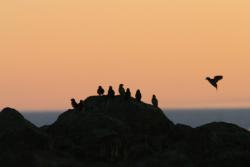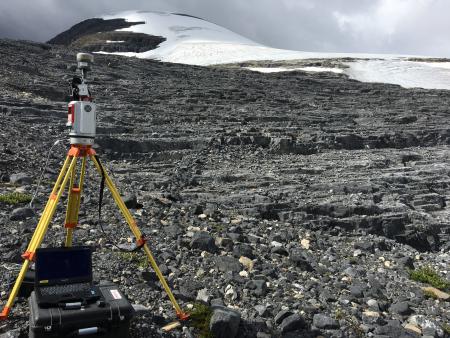Welcome to the Virtual Base Camp, the starting point for your exploration of the polar regions with PolarTREC teachers and researchers!
2018 Expedition Timeline
Expeditions
Chemical Ecology of Shallow Water Marine Communities
What Are They Doing?

Expedition Map
Phenology and Vegetation Change in the Warming Arctic
What Are They Doing?

The ITEX network works collaboratively to study changes in tundra plant and ecosystem responses to experimental warming. The network monitoring sites are located across many major ecosystems of the Arctic.
This project will provide urgently needed data critical to understanding the impact of multi-scale vegetation change on ecosystem function, namely land-atmosphere carbon and water fluxes and energy balance.
Expedition Map
Jellyfish in the Bering Sea 2018
What Are They Doing?

The ultimate goal is to estimate the reproductive capacity and success of this jellyfish in relation to climate variability and to investigate the potential for jellyfish population increases to become a recurring pattern in the Bering Sea under future climate scenarios. This will in turn enable forecasting of jellyfish abundance and their predatory impacts in the Bering Sea ecosystem.
Expedition Map
Migration and Carry-Over Effects in Arctic Seabirds
What Are They Doing?

This project will help us understand the non-breeding ecology of seabirds. This need is especially pressing in areas of the Arctic undergoing changes in winter sea ice dynamics and increases in natural resource development. Using the data they collect, the team will develop a conceptual model of how warming in the Pacific Arctic will alter the region’s food web structure which is important for seabird conservation and management.
Expedition Map
Shrubs Snow and Nitrogen in the Arctic
What Are They Doing?

This project will assess contributions of different shrub feedbacks to carbon and nitrogen cycling, and improve predictions of the consequences of shrub expansion in the Arctic for regional and global climate.
Expedition Map
Permafrost and Community
What Are They Doing?

The project will establish local climate and permafrost observation system and map land cover and permafrost in the Upper Kuskokwim region. It will also develop a geo-hazard map for the region to facilitate safe subsistence and recreational practices and land use. The data, knowledge, and skills gained through this project will benefit the tribal communities in implementation of safe land use practices, and planning for the future.
Expedition Map
Sliding Glaciers
What Are They Doing?

Expedition Map
Winter Respiration in the Arctic
What Are They Doing?

Expedition Map
Antarctic Automatic Weather Stations 2018
What Are They Doing?

The Antarctic Automatic Weather Station network provides a greater understanding of the surface meteorology and climatology throughout the continent of Antarctica. The AWS network spans the Ross Ice Shelf, Ross Island, West Antarctica, East Antarctica, and the South Pole. Since some of the AWS have been working for over 30 years, we can begin to understand the climate over many regions of Antarctica.
Expedition Map
IceCube and The Askaryan Radio Array 2018
What Are They Doing?

The fully built ARA project, also located at the South Pole, will have an effective volume 100 times bigger than IceCube. The trade off is that it is only capable of observing radio waves from extremely high energy neutrinos, a million times more energetic than the neutrinos produced by cosmic rays in the atmosphere. This neutrinos are extremely rare, which is why such a large detector is needed to increase the chance of seeing one.
Expedition Map
Dry Valleys Ecosystem Study
What Are They Doing?












